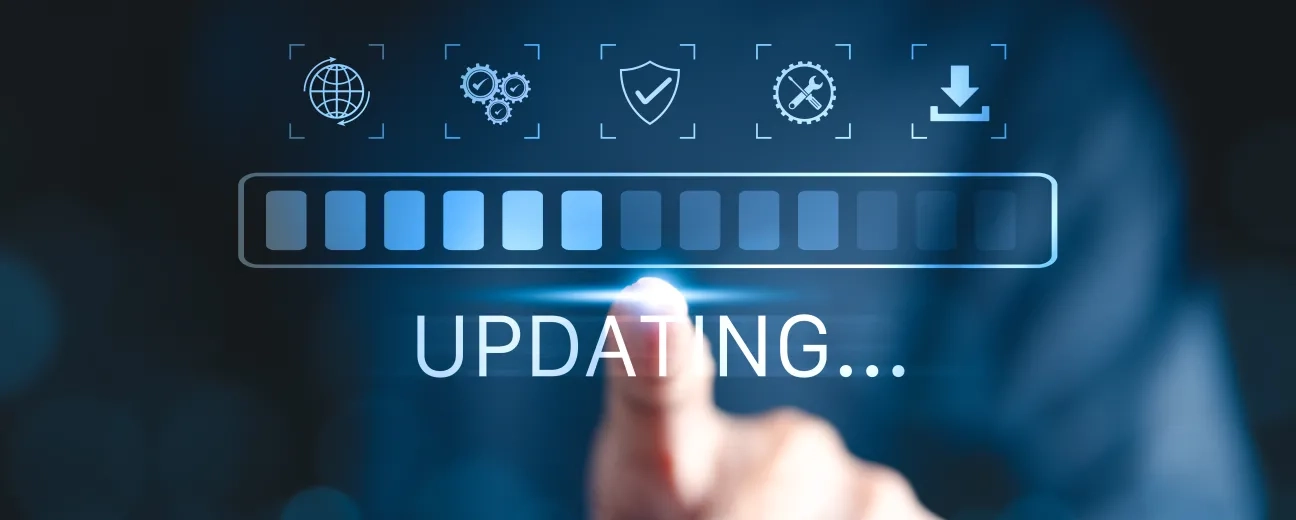
We’re excited to hear your project.
Let’s collaborate!

15 years! 15 years since Drupal's been turbocharging websites with cutting-edge features!
15 years during which the open source platform has been shaping mentalities and has been daring innovation-driven developers and organizations to embrace “change”!
And, ironically, it's precisely its lead developers' openness to innovation that made it increasingly challenging for its end users to keep up with its major upgrades. It looks like Drupal's own innovative nature is the one “sabotaging“ it: turning the upgrading from one major Drupal version to the next into such a cumbersome, often discouraging process.
Therefore: a new way of applying website upgrades in Drupal was greatly needed!
And so, this need easily turned into a commitment for its founder and his team, who've been making progresses in setting up a way of synchronizing their “thirst” for innovation with Drupal users' efforts to assimilate the platform's upgrades. To implement them into their own web projects/websites.
This is when the “continuous innovation” idea sparked and soon turned into a “movement” about to turn, now, into a whole working method to revolutionize the way we're upgrading our websites from one Drupal version to another.
Let's dig into details:
The model is nothing new to you, we're sure about that, just that maybe you haven't yet put a name on it.
It's been around since Drupal 8, in fact, and it's strongly related to the Drupal community's “commitment” to release a new minor upgrade, for the same version of Drupal, every 6 moths.
Just think of the improvements in terms of functionality between Drual 8.2 and Drupal 8.1, for instance. BigPipe, layouts, workflows have been all improvements in the platform's functionality which have been added gradually from one new upgrade to the other.
This way you, as a Drupal developer/Drupal user can continuously upgrade your website with new sizable improvements.
It gets a lot easier to incorporate all these minor upgrades in Drupal than if you had to wait a couple of years for all these minor upgrades to be released all at once, upon the launch of a new major Drupal version.
“Continuous upgrade” is THAT solution to the challenge that Drupal developers used to face every few years, when they had to embark on a tedious, overly complex upgrading “adventure”.
It's the overall success of the continuous innovation model applied to minor upgrades that convinced Drupal's core developers to extend its benefits to the major upgrading process, as well. Such as upgrading from Drupal 8 to Drupal 9, for instance.
What would this project imply?
Implicitly, as new functionalities get added to Drupal 8, with each and every new minor upgrade's release, its load of deprecated code will get heavier and heavier. Up to one the point when this version will be replaced with Drupal 9.
All this while the upgrading process will be an “organic”, less “traumatizing” one for Drupal developers and Drupal users. By the time Drupal 9 gets released, all Drupal 8 websites will have already incorporated its new features.
In other words” Drupal 9 will be nothing but Drupal 8 minus its overload of code which will have already become deprecated.
There will be no need for an overly complex migration process as we know it today!
Glad you asked!
In order to gain full benefits from integrating this innovative upgrading model into your workflow, you need to start (if you haven't already) adopting the best practices:
By including these 2 key best practices into your web development routine you'll be actually ensuring that Drupal 9.0 will be compatible with your website from its very first day of release!
Well, as a site owner, the very best practice you could adopt (as you “prepare” your site for Drupal 9's release) is to migrate it to Drupal 8 if it still runs on Drupal 7.
Thus, your team of Drupal developers will be able to apply all the Drupal 8 minor upgrades every few months, getting it ready for Drupal 9's release.
The news is that there is no big release news!
According to Drupal's founder, Dries Buytaert, Drupal 9.0 won't be released any time soon!
Meanwhile, regular minor upgrades will be released for Druipal 8, according to their release schedule, so be sure to catch up with those.
In conclusion, as already stated in this post's title: “future looks good” for us, the ones living on “planet Drupal”! Running major upgrades in Drupal will never be the same again once the “continuous innovation” method will have been fully implemented for streamlining the whole process of moving websites from one major Drupal version to another, as well.
What do you think? Do you see it as a truly viable solution to the ever-challenging way of migrating websites from one Drupal version to the next one or have you already identified some of its possible limitations?

We’re excited to hear your project.
Let’s collaborate!